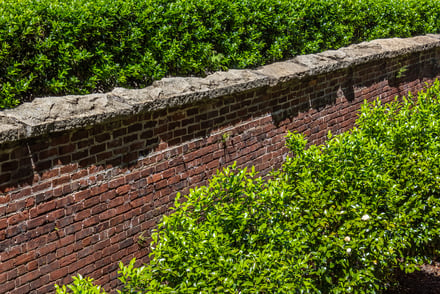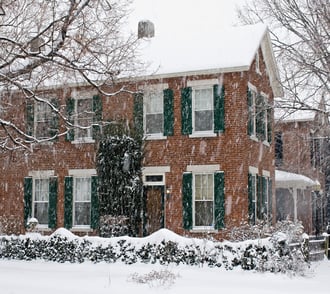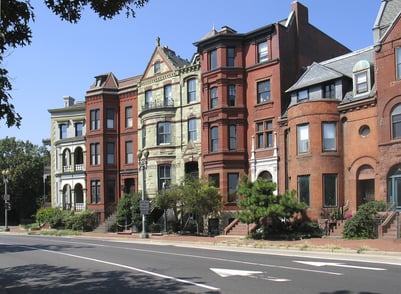Those stately brick homes that characterize the historic neighborhoods of DC are hard to ignore. They have a very unique charm to them that adds to the desirability of the community. Not only are they beautiful to look at, but there are also many other benefits that are often overlooked.
Why Brick?
In DC the post-1814 brick reconstruction of the Capitol led to the widespread use of brick in public buildings. Many brick homes in DC’s historic neighborhoods were constructed after the early 1870’s when building regulations for fire control restricted the construction of wooden buildings. By 1900 Washington had become a city of brick buildings with the construction industry supported by nearly 100 brickyards.
Brick has continued to be a principal building material in Washington in both residential and commercial construction. Today the Washington DC area is the largest market for brick in the country.
Material of Choice
Here are some of the reasons brick is still the material of choice:
1. Fire protection:
- More than two centuries ago, row houses in DC were required to have walls built of brick or stone.
- In the nineteenth century, several American cities, including Baltimore, Chicago, Denver, Portland, Maine, and St. Louis, responded to devastating fires by adopting and often mandating the extensive usage of brick in local building codes.
- Today brick is one of the few building materials whose wall systems attain a one-hour fire rating without incorporating other fire-resistant materials.
2. High wind and harsh weather protection:
- Brick was often used in lighthouse construction. The Cape Hatteras Light, the tallest brick lighthouse in America, was completed in 1870 and is still in service today.
- A 2004 study showed that homes built with brick offer significantly more protection from wind-blown debris than homes built with vinyl or fiber-cement siding. In fact, the tests showed that even structures with a brick veneer exceed hurricane building code standards.
- In 2009, a study funded by the National Science Foundation revealed that buildings constructed with brick veneer/concrete masonry could resist category D earthquakes without collapse.
3. Unique flexibility in design
Whether serving as a load-bearing structure in historical buildings or as a veneer in many of today's new structures, brick's modular shape and size give it superior design flexibility. With modern manufacturing technologies, customers have more color and texture options than ever. The historic classic look can be replicated by making new brick, often using historically appropriate techniques and materials, that matches the brick found in America's most treasured historic
4. Durability
Brick is a time-tested building material. Although the initial cost may be higher, it lasts much longer than other building materials. The initial investment is worthwhile because brick:
- Is not susceptible to rotting or denting
- Doesn’t require frequent painting or staining
- Ages well and increases in value
5. Sustainability
Brick is an eco-friendly building material that is entirely natural, creates little waste and is easily recyclable. Bricks can be reused, and because of their long lifespan, require less energy for the manufacturing process.
Tuckpointing, also known as “repointing,” plays an essential role in the maintenance and rehabilitation of centuries-old structures. If done correctly, it will ensure their optimal appearance, stability, and value for decades to come.
Renaissance Development, a leader in brick restoration and historic preservation, specializes in the restoration of a historic brick building’s mortar joints using traditional methods (tuckpointing) and materials. Contact us for a free site visit and project quote.
Tags:
Exterior brickJul 12, 2018 5:55:25 PM



